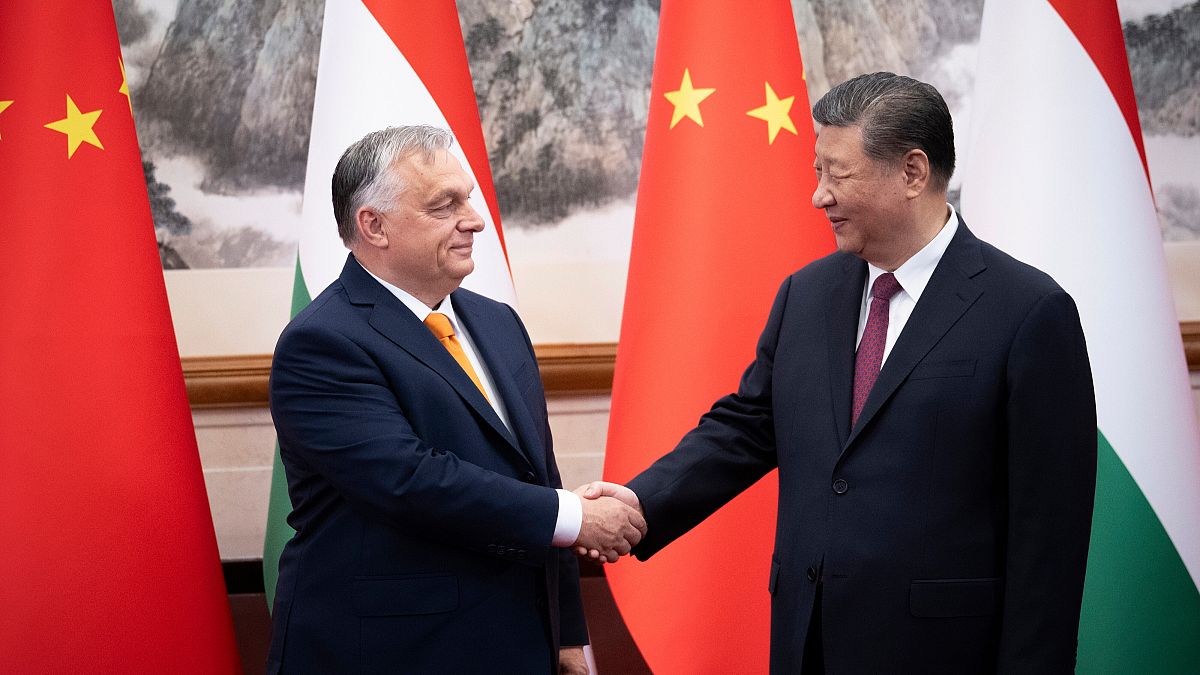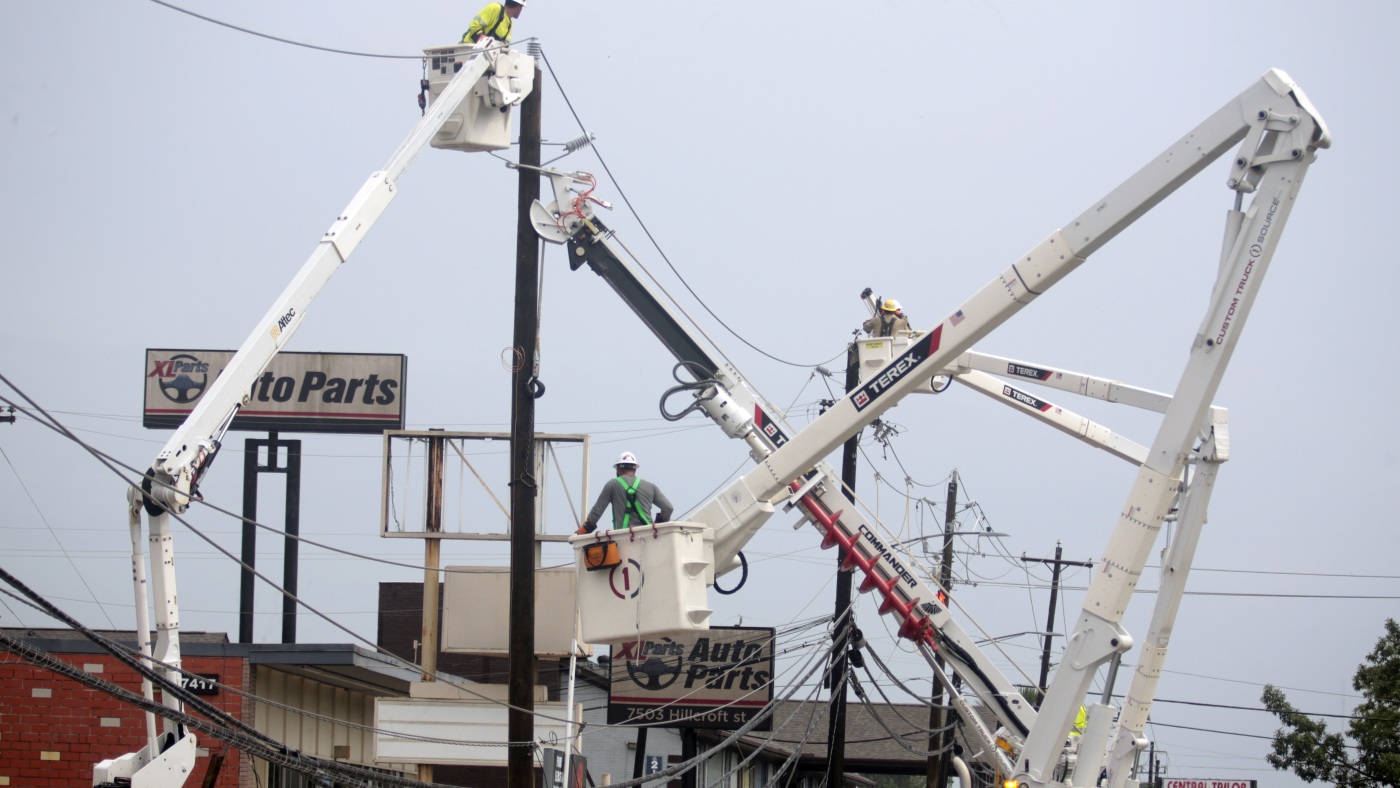Minnesota
Commentary: Indigenous knowledge plays critical role in securing resilience of Minnesota forests

The
Leech Lake Band of Ojibwe
shares more boundaries with the federally managed National Forest System than any other tribe in the United States, with 75% of the reservation border adjoining the Chippewa National Forest in northern Minnesota.
Being in the Northwoods, timber harvesting and forest management are important to the tribe’s economy. Yet, the value of the forest extends well beyond timber production. Forests provide the Leech Lake Band a deep cultural foundation, sustaining life for humans, plants and animals, all while cleaning the air and water.
However, forest health has declined rapidly over the past two centuries. Clear-cut logging by European settlers combined with a management legacy of fire suppression and the impacts of climate change are increasingly exposing our forests to risks from severe wildfire, insects and disease and drought.
Many modern forests now lack a diversity of tree ages, especially older trees which are a vital component of a healthy and resilient forest. Old-growth forest conditions are now present on just 13% of lands within federal national forests, and here in the State of Minnesota, it’s less than half that amount.
The absence of older forests means a loss of vital habitat for important plants and animals. For example, old-growth forests are essential habitats for eagles, a doodem (clan) animal of the Leech Lake Band of Ojibwe. Eagles need very tall trees to nest and hunt, heights that can only be provided by old-growth forests. By protecting old-growth forests, we protect the vital habitat of the great American bald eagle.
While fire — including natural ignitions and cultural burning — contributes to the health of many forest ecosystems, the average acreage burned in the U.S. has more than doubled in the past half-century. The Federal Government now spends $7 billion to manage the escalating wildfire crisis. However, this $7 billion is only sufficient to conduct fuel treatments on 60 million of the 800 million forested acres nationwide.
Additionally, forests damaged by insects sequester 69% less carbon than healthy forests — the equivalent of adding 50 million tons of CO2, or the emissions of 10 million cars, into our atmosphere each year.
In light of these challenges, the U.S. Forest Service is exploring ways to restore old-growth forests as part of a strategy to increase the resilience and health of national forests, both for the benefit of people and of nature. Specifically, these agencies are looking for ways to strengthen forest resilience by incorporating Indigenous knowledge into forest management planning and practices.
Contrary to myths of “virgin” or “untouched” forests when Europeans first arrived on this continent, the evidence is clear that forests were actively taken care of by Indigenous people for thousands of generations. And it is still that way today.
Modern studies have shown that Native American land use increased the abundance of fire-tolerant, shade-intolerant and nut-producing trees up to 31 miles from Indigenous settlements. Utilizing Indigenous knowledge can help slow and even reverse the troubling trends in forest health.
The Leech Lake Band knows how important a healthy and resilient forest system is for the livelihood of those living throughout northern Minnesota. They are excited to partner with the U.S. Forest Service to share their knowledge of practices that will reduce the dangers of uncontrolled wildfires, increase long-term timber yields using sustainable forestry practices, and provide diverse habitats for numerous species, along with many other resources and values provided by healthy forests.
The reality is that the federal government does not have the capacity to adequately manage the nation’s 193 million acres of national forests alone and forest health issues do not respect political boundaries.
Fortunately, there are 574 federally recognized tribes across the United States with a deep connection to the land and a unique understanding of forest and environmental relationships learned and passed down over many generations.
Let’s expand engagement with tribes — the original stewards of these lands — and work together to address the health of our nation’s forests so everyone can receive the benefits from healthy and resilient forests.
Keith Karnes began working for the Leech Lake Band of Ojibwe in 2006 and now serves as the Division of Resource Management Forestry Director.

Minnesota
‘American Pickers’ returning to Minnesota this fall

DULUTH, Minn. (Northern News Now) – Calling all collectors, the “American Pickers” want to shop your stuff.
The History Channel duo of Mike and Robbie Wolfe will be on the road this fall, visiting Minnesota in September.
The series follows the brothers as they hunt for America’s most valuable antiques.
They’re looking for not only cool junk but cool people.
Anyone with a unique story or extraordinary collection is encouraged to contact them.
The Pickers do not pick stores, flea markets, malls, auction businesses, museums, or anything open to the public.
If you are interested in being featured on the show, send your name, phone number, location, and collection description with photos here or call (646) 493-2184.
Click here to download the Northern News Now app or our Northern News Now First Alert weather app.
Copyright 2024 Northern News Now. All rights reserved.
Minnesota
Minnesota landscaping company swaps for electronic lawn gear

Watch CBS News
Be the first to know
Get browser notifications for breaking news, live events, and exclusive reporting.
Minnesota
Summer of Soccer: Writing History | Minnesota United FC

The first two international soccer tournaments of the summer came to a close yesterday, and I’m not sure how to feel about it yet. It’s bittersweet, because seeing the finals is always the most exhilarating part, but when I woke up this morning knowing that there’d be no international soccer to watch, I shed a single tear while staring at my reflection in the television screen.
Now I have to actually WORK while I’m at work instead of doing “research”? No, that can’t be right. I’ll extend the tournament fun a bit longer for all of us; let’s go through both competitions and talk about the knockout stage, key takeaways, and my favorite things from each one. Then, we can all go back to the real world until the Olympics start up to distract us once more.
Euros: Está Volviendo a Casa
The last time we checked in on the Euros, I said Germany and Austria would play each other in the final. HA! That did not happen. Not even close, though I feel like Germany would’ve made the final if they didn’t have to play Spain in the quarterfinals. Tough draw!
In fact, the entire lower half of the bracket was a tough draw. If you’d bet on five of the eight teams in that half of the bracket to win the entire tournament before it got started, I wouldn’t have thought you were crazy. Spain, Germany, Portugal, Belgium, and France all had to go through one another to make the final, and it’s no surprise that iron sharpened iron and produced the tournament champions, La Furia Roja, who claimed their record fourth title.
This was a new-look Spanish side, with youngsters Nico Williams (22) and Lamine Yamal (turned 17 the day before the final) grabbing headlines for more than just their youthfulness. Where once the world was dazzled by Tiki Taka and the fluid exploits of Xavi, Iniesta, and Busquets, we now see the field marshaling of Rodri providing a base from which Yamal and Williams can use their speed and attacking quality to wreak havoc on even the world’s most organized defense. The Spaniards weren’t playing the exact style that made so many fall in love with them in 2010, but I’d say this new version of it will win a few admirers in its own right.
As for the runners-up, I can’t say I’m surprised. I enjoy poking fun at England’s failures, but jokes aside, this is an extremely talented squad that has experienced unprecedented disappointment in recent times. Losing consecutive Euro finals is ludicrous, but when you throw in their fourth-place finish in the 2018 World Cup, it begins to feel like some force is working against the Brits. We saw flashes of Phil Foden and Jude Bellingham’s skill, but a sometimes uninspired, haphazard tournament from the Three Lions kept Southgate’s men from finally jumping that final hurdle and left Harry Kane trophyless once more.
Beyond the final, there were plenty of stories worth mentioning. It was a tournament that emphasized collective achievement and performance over the individual, and while Rodri ended up winning player of the tournament, it could easily have gone to any number of players on the winning side. Turkey played fantastic soccer, showing that they could very well be at the start of a golden era for their national team, and Arda Guler might be the man to lead it. Georgia acquitted themselves well in their first-ever Euros appearance, making the Spanish sweat in their Round of 16 matchup when they went up first, courtesy of the tournament’s leading goal scorer (own goal).
We saw some legends say farewell, including the German pair of Toni Kroos and Thomas Mueller, France’s Olivier Giroud, and Belgian defender Jan Vertonghen, all three of whom have either retired completely or stepped away from international soccer. Likewise, we may have seen the likes of Luka Modric, Xherdan Shaqiri, and (maybe) the legendary Cristiano Ronaldo play their final minutes at major international tournaments. Only time will tell which of yesterday’s stars will be a part of tomorrow’s stories, but for now, let’s just appreciate that we had the chance to watch such immensely talented individuals.
In many ways, this Euro was a changing of the guard, as every iteration is to some degree. Guler (19), Yamal (17), Bellingham (21), and Germany’s Jamal Musiala (21) look to be the cream that will lead the next crop of soccer superstars, with several other names worthy of mention showing their stuff in Germany over the last month. What great players, what a tournament, what a game. Truly beautiful.
Copa América: The GOAT Gets Another One
For anyone that watched both the Euros and the Copa América, it was clear that there are stylistic differences across the Pacific Ocean. Where the European teams tended to follow a distinct style of play, the American teams threw in more flair, along with some extra grit and showmanship that, in my opinion, either made the games more exciting or killed off any recognizable rhythm.
I was much closer on my predictions for the Copa América than I was for the Euros, so cut me some slack. I thought Uruguay would fall to Argentina in the final, and though Colombia replaced Bielsa’s men for the silver medal, I got the champions spot on. Not the hardest prediction to make, but hey, it’s honest work.
The champions played with a swagger that comes from having been there and done that, making it three major tournament wins in a row. The aura of Lionel Messi was arguably more effective than the man himself at this edition of Copa América, as Lautaro Martinez ended up being the star man for La Albiceleste when he was given the chance. They were tasked with beating a stubborn Canada side twice in the same tournament, as well as a youthful, exciting Ecuador side that we’ll likely be hearing from in the future. All in all, it wasn’t Argentina’s most entertaining performance at a tournament, but dang was it an effective and efficient way to claim their 16th (!!) Copa América.
Before we move on to my miscellaneous favorites from the competition, I need to give Colombia their flowers. The heroic performance of James Rodriguez (Copa América record 6 assists) made me feel like a teenager watching the 2014 World Cup all over again, and I fell in love with Los Cafeteros all over again. Luis Diaz was electric as always, and the soccer their team was playing this month was mesmerizing more often than not. They fell flat in the final, but what a display. Bravo, Colombia.
Final aside, it was an exciting tournament throughout. We witnessed the maturation of a new Uruguayan generation, and we discovered that Brazil’s next superstars aren’t quite ready to shoulder the burden of the Canary Yellow. I was surprised to see Panama and Canada separate themselves as the best two Concacaf teams in the tournament by far, and while I still think the USA and Mexico have more quality, they certainly didn’t show the spirit and fight that their fellow confederation members did.
On a particularly bright note, Loons Tani Oluwaseyi and Dayne St. Clair performed very admirably in Canada’s third-place match, proving to be valuable assets in the Canadian men’s national team setup. If I were a betting man, I’d say additional call ups are in their futures. Well done, lads, and well done to Jesse Marsch for leading the Maple Leafs to fourth-place in their first-ever Copa América.
The group-stage exit of the USMNT proved to be the straw that broke Gregg Berhalter’s job security, and though I may be in the minority that’s sad to see him go, I am choosing to be excited for whomever is chosen to replace him. I’ve already talked about the state of US Soccer enough, but I’ll add this: let’s be patient and supportive as we continue to build a better tomorrow for American soccer. It’s going to get better; trust me.
From the tactical masterclass of the Euros to the passion-filled slugfest of the Copa América, we’ve been treated to a fantastic month of international soccer. It was exhilarating and frustrating at times, pulling me in and making me care about people from places I’ve never been and may never go. I rode the highs of the Georgian underdogs and felt the lows of the Colombians that fell at the final challenge. I learned about new cultures, participated in the joys of competition, and felt closer to the world around me.
As always, these tournaments ended up being far too short for my liking. I can’t wait for the 2028 editions of both of these tournaments, but first, let’s enjoy this summer’s Olympics. Then, start preparing yourself for World Cup 2026! We’ve got so much to look forward to in this awe-inspiring sport over the next few years, and I can barely contain my excitement.
-

 World1 week ago
World1 week agoAfter Moscow, Hungary's Orbán makes surprise visit to Beijing
-

 Movie Reviews1 week ago
Movie Reviews1 week agoFilm Review: The Bikeriders – Soundsphere magazine
-

 World1 week ago
World1 week agoAustralia appoints special envoy to combat anti-Semitism
-

 California1 week ago
California1 week agoTwo arrested in connection to separate California wildfires
-

 Fitness1 week ago
Fitness1 week agoExercise with Purpose: Bar Talk with Eric Bartosz – Saucon Source
-

 News1 week ago
News1 week agoBiden tells Hill Democrats he is staying in the race | CNN Politics
-

 World1 week ago
World1 week agoIndia’s Modi makes first Russia visit since Ukraine invasion
-

 News1 week ago
News1 week agoHow to fight shrinkflation? Pay attention to unit prices at grocery stores















